MARKETING
How to Blog When You Have No Time

Finding the time to blog is a frequent challenge for many marketers. Marketers often wear many hats and it can be difficult to focus long enough to churn out quality articles when you’re pressed for time.
How to blog when you have no time? We spoke with author and marketing expert David Meerman Scotton how to avoid common time management mistakes by developing a routine.
Blogging Time Management
Blogging time management refers to the ability to effectively make use of your time for blogging and content creation. This could be as simple as creating a schedule to get blogging tasks done on a weekly basis and figuring out which times of day you’re most productive.
No matter what you’ve got on your marketing plate, it won’t get done without proper time management. Learning how to make the most of your time will greatly affect your productivity and overall success as a blogger.
Why is blogging time management important?
When it comes to creating content, maintaining consistency is key. This is why blogging time management is so important. You may not always feel motivated to create on a regular basis, but establishing a schedule will help you to stay consistent with your blog output.
For example, you may find that you’re better at writing in the mornings. So you can set aside 2 to 3 hours each morning to work on writing based on how many articles you’d like to produce each week.
Create a content calendar to help you plan your content in advance and set reasonable deadlines. Make note of holidays or seasonal events that may impact your content schedule.
Getting organized will help you set and achieve goals for your blog. If you’re starting from scratch, check out our guide to starting a blog.
How to Blog When You Have No Time
1. Use blog templates.
An easy way to jump-startyour creative process is to start with a template. Why suffer through writer’s block staring at a blank document if you don’t have to? HubSpot’s free blog post templatescan help you format your article and get started writing faster than starting from scratch.
[Include screenshot]Templates function as an easy to follow outline where you can organize your thoughts and start to flesh out your content. HubSpot’s offer includes six templates ranging from how-to posts to pillar pages and infographics.
2. Develop a blogging routine.
In many ways blogging reminds David of exercising. In order to be successful at it, you will need to develop a routine. “It is programmed in,” David says. “It is about building it into your life and making it a second nature, like running in the mornings or doing yoga after work.”
Dedicate time each day to writing or allocate one to two designated writing days per week. Block time off on your calendar and turn off messaging apps to avoid interruptions while you write.
Once you’ve gotten organized and created a routine, you may find you had more time to write than previously thought.
3. Keep a list of ideas.
One way to save time coming up with content is to make sure you always have a running list of fresh ideas to work with. That way you’re not scrambling at the last minute for worthy topics.
Creating topic clusterscan help you flesh out your blog content strategy. A topic clusteris multiplearticles grouped by a shared topic or related topic. For example, you may have one pillar page that gives a broad overview of a topic. From there, you can create more in-depth, specific articles on related subtopics.
This will not only help you plan content but organize your site architecture as well.
4. Perform research prior to writing.
It’s much easier to write when you have all the pertinent information you want to include in one place. Research your chosen topic before sitting down to write and organize the information in a quick outline.
Include any keyword researchin this process so you can ensure your content aligns with what readers are searching for online. This way when you sit down to write, your only job is to write — not look up new facts.
5. Don’t edit while writing.
When writing it’s very tempting to want to stop and make corrections. Don’t do this. It breaks your writing flow.
Instead, write a rough draft withjust pops into your mind first. Follow your train of thought without stopping to fix typos or edit. The goal is to just get your thoughts on the page. Once your initial draft is written, you can always go back and make changes.
6. Perform article updates.
Another strategy is to build upon existing content by performing an article update. Giving your older content a refresh is not only good for SEO and your readers, but it can be a quick win for adding new content in a time crunch.
With older content, you may need to include additional research and update it for accuracy, but it generally takes less time than writing a new article from scratch. Review your existing content. Are there articles you can do a deeper dive on? Have there been industry advancements you can include? Is there a new angle to explore?
7. Find content ideas wherever you go.
By making blogging a life routine, you will come across creative content ideas much more frequently. Keep an open mind, observe new things that interest you personally and find ways to turn them into fodder for a blog post. By noticing world dynamics that get you excited and relating them to your audience, the process of blogging becomes a lot more natural and fun.
Accumulate content ideas from different situations in life and find ways to apply them to your industry.
8. Hire a freelancer.
Sometimes your workload is just too heavy and your efforts can be better used elsewhere. If you have the resources and budget to do it, hiring outside help may also be a great option.
Sites like Upwork, Contenta, and MediaBistro make it easy to find writing professionals. If looking to generate content on a larger scale, consider working with a content agency.
Blog Like A Pro
Creating content with a consistent cadence is an obstacle busy marketers frequently struggle with. Creating a schedule and mastering blogging time management will allow you to create even when you’re short on time.
This article was originally published in December 2010 and has been updated for comprehensiveness.
MARKETING
YouTube Ad Specs, Sizes, and Examples [2024 Update]
![YouTube Ad Specs, Sizes, and Examples [2024 Update] YouTube Ad Specs, Sizes, and Examples](https://articles.entireweb.com/wp-content/uploads/2024/06/YouTube-Ad-Specs-Sizes-and-Examples.jpg)
Introduction
With billions of users each month, YouTube is the world’s second largest search engine and top website for video content. This makes it a great place for advertising. To succeed, advertisers need to follow the correct YouTube ad specifications. These rules help your ad reach more viewers, increasing the chance of gaining new customers and boosting brand awareness.
Types of YouTube Ads
Video Ads
- Description: These play before, during, or after a YouTube video on computers or mobile devices.
- Types:
- In-stream ads: Can be skippable or non-skippable.
- Bumper ads: Non-skippable, short ads that play before, during, or after a video.
Display Ads
- Description: These appear in different spots on YouTube and usually use text or static images.
- Note: YouTube does not support display image ads directly on its app, but these can be targeted to YouTube.com through Google Display Network (GDN).
Companion Banners
- Description: Appears to the right of the YouTube player on desktop.
- Requirement: Must be purchased alongside In-stream ads, Bumper ads, or In-feed ads.
In-feed Ads
- Description: Resemble videos with images, headlines, and text. They link to a public or unlisted YouTube video.
Outstream Ads
- Description: Mobile-only video ads that play outside of YouTube, on websites and apps within the Google video partner network.
Masthead Ads
- Description: Premium, high-visibility banner ads displayed at the top of the YouTube homepage for both desktop and mobile users.
YouTube Ad Specs by Type
Skippable In-stream Video Ads
- Placement: Before, during, or after a YouTube video.
- Resolution:
- Horizontal: 1920 x 1080px
- Vertical: 1080 x 1920px
- Square: 1080 x 1080px
- Aspect Ratio:
- Horizontal: 16:9
- Vertical: 9:16
- Square: 1:1
- Length:
- Awareness: 15-20 seconds
- Consideration: 2-3 minutes
- Action: 15-20 seconds
Non-skippable In-stream Video Ads
- Description: Must be watched completely before the main video.
- Length: 15 seconds (or 20 seconds in certain markets).
- Resolution:
- Horizontal: 1920 x 1080px
- Vertical: 1080 x 1920px
- Square: 1080 x 1080px
- Aspect Ratio:
- Horizontal: 16:9
- Vertical: 9:16
- Square: 1:1
Bumper Ads
- Length: Maximum 6 seconds.
- File Format: MP4, Quicktime, AVI, ASF, Windows Media, or MPEG.
- Resolution:
- Horizontal: 640 x 360px
- Vertical: 480 x 360px
In-feed Ads
- Description: Show alongside YouTube content, like search results or the Home feed.
- Resolution:
- Horizontal: 1920 x 1080px
- Vertical: 1080 x 1920px
- Square: 1080 x 1080px
- Aspect Ratio:
- Horizontal: 16:9
- Square: 1:1
- Length:
- Awareness: 15-20 seconds
- Consideration: 2-3 minutes
- Headline/Description:
- Headline: Up to 2 lines, 40 characters per line
- Description: Up to 2 lines, 35 characters per line
Display Ads
- Description: Static images or animated media that appear on YouTube next to video suggestions, in search results, or on the homepage.
- Image Size: 300×60 pixels.
- File Type: GIF, JPG, PNG.
- File Size: Max 150KB.
- Max Animation Length: 30 seconds.
Outstream Ads
- Description: Mobile-only video ads that appear on websites and apps within the Google video partner network, not on YouTube itself.
- Logo Specs:
- Square: 1:1 (200 x 200px).
- File Type: JPG, GIF, PNG.
- Max Size: 200KB.
Masthead Ads
- Description: High-visibility ads at the top of the YouTube homepage.
- Resolution: 1920 x 1080 or higher.
- File Type: JPG or PNG (without transparency).
Conclusion
YouTube offers a variety of ad formats to reach audiences effectively in 2024. Whether you want to build brand awareness, drive conversions, or target specific demographics, YouTube provides a dynamic platform for your advertising needs. Always follow Google’s advertising policies and the technical ad specs to ensure your ads perform their best. Ready to start using YouTube ads? Contact us today to get started!
MARKETING
Why We Are Always ‘Clicking to Buy’, According to Psychologists

Amazon pillows.
MARKETING
A deeper dive into data, personalization and Copilots

Salesforce launched a collection of new, generative AI-related products at Connections in Chicago this week. They included new Einstein Copilots for marketers and merchants and Einstein Personalization.
To better understand, not only the potential impact of the new products, but the evolving Salesforce architecture, we sat down with Bobby Jania, CMO, Marketing Cloud.
Dig deeper: Salesforce piles on the Einstein Copilots
Salesforce’s evolving architecture
It’s hard to deny that Salesforce likes coming up with new names for platforms and products (what happened to Customer 360?) and this can sometimes make the observer wonder if something is brand new, or old but with a brand new name. In particular, what exactly is Einstein 1 and how is it related to Salesforce Data Cloud?
“Data Cloud is built on the Einstein 1 platform,” Jania explained. “The Einstein 1 platform is our entire Salesforce platform and that includes products like Sales Cloud, Service Cloud — that it includes the original idea of Salesforce not just being in the cloud, but being multi-tenancy.”
Data Cloud — not an acquisition, of course — was built natively on that platform. It was the first product built on Hyperforce, Salesforce’s new cloud infrastructure architecture. “Since Data Cloud was on what we now call the Einstein 1 platform from Day One, it has always natively connected to, and been able to read anything in Sales Cloud, Service Cloud [and so on]. On top of that, we can now bring in, not only structured but unstructured data.”
That’s a significant progression from the position, several years ago, when Salesforce had stitched together a platform around various acquisitions (ExactTarget, for example) that didn’t necessarily talk to each other.
“At times, what we would do is have a kind of behind-the-scenes flow where data from one product could be moved into another product,” said Jania, “but in many of those cases the data would then be in both, whereas now the data is in Data Cloud. Tableau will run natively off Data Cloud; Commerce Cloud, Service Cloud, Marketing Cloud — they’re all going to the same operational customer profile.” They’re not copying the data from Data Cloud, Jania confirmed.
Another thing to know is tit’s possible for Salesforce customers to import their own datasets into Data Cloud. “We wanted to create a federated data model,” said Jania. “If you’re using Snowflake, for example, we more or less virtually sit on your data lake. The value we add is that we will look at all your data and help you form these operational customer profiles.”
Let’s learn more about Einstein Copilot
“Copilot means that I have an assistant with me in the tool where I need to be working that contextually knows what I am trying to do and helps me at every step of the process,” Jania said.
For marketers, this might begin with a campaign brief developed with Copilot’s assistance, the identification of an audience based on the brief, and then the development of email or other content. “What’s really cool is the idea of Einstein Studio where our customers will create actions [for Copilot] that we hadn’t even thought about.”
Here’s a key insight (back to nomenclature). We reported on Copilot for markets, Copilot for merchants, Copilot for shoppers. It turns out, however, that there is just one Copilot, Einstein Copilot, and these are use cases. “There’s just one Copilot, we just add these for a little clarity; we’re going to talk about marketing use cases, about shoppers’ use cases. These are actions for the marketing use cases we built out of the box; you can build your own.”
It’s surely going to take a little time for marketers to learn to work easily with Copilot. “There’s always time for adoption,” Jania agreed. “What is directly connected with this is, this is my ninth Connections and this one has the most hands-on training that I’ve seen since 2014 — and a lot of that is getting people using Data Cloud, using these tools rather than just being given a demo.”
What’s new about Einstein Personalization
Salesforce Einstein has been around since 2016 and many of the use cases seem to have involved personalization in various forms. What’s new?
“Einstein Personalization is a real-time decision engine and it’s going to choose next-best-action, next-best-offer. What is new is that it’s a service now that runs natively on top of Data Cloud.” A lot of real-time decision engines need their own set of data that might actually be a subset of data. “Einstein Personalization is going to look holistically at a customer and recommend a next-best-action that could be natively surfaced in Service Cloud, Sales Cloud or Marketing Cloud.”
Finally, trust
One feature of the presentations at Connections was the reassurance that, although public LLMs like ChatGPT could be selected for application to customer data, none of that data would be retained by the LLMs. Is this just a matter of written agreements? No, not just that, said Jania.
“In the Einstein Trust Layer, all of the data, when it connects to an LLM, runs through our gateway. If there was a prompt that had personally identifiable information — a credit card number, an email address — at a mimum, all that is stripped out. The LLMs do not store the output; we store the output for auditing back in Salesforce. Any output that comes back through our gateway is logged in our system; it runs through a toxicity model; and only at the end do we put PII data back into the answer. There are real pieces beyond a handshake that this data is safe.”
-

 WORDPRESS3 days ago
WORDPRESS3 days agoWordPress biz Automattic details WP Engine deal demands • The Register
-
SEARCHENGINES5 days ago
Daily Search Forum Recap: September 30, 2024
-

 SEARCHENGINES6 days ago
SEARCHENGINES6 days agoGoogle Volatility With Gains & Losses, Updated Web Spam Policies, Cache Gone & More Search News
-

 SEO7 days ago
SEO7 days ago6 Things You Can Do to Compete With Big Sites
-
SEARCHENGINES4 days ago
Daily Search Forum Recap: October 1, 2024
-

 SEO6 days ago
SEO6 days agoAn In-Depth Guide For Businesses
-

 AFFILIATE MARKETING6 days ago
AFFILIATE MARKETING6 days agoThis Minimalist Lamp Lets You Pick From 16 Million+ Lighting Colors for Maximum Productivity
-

 AFFILIATE MARKETING6 days ago
AFFILIATE MARKETING6 days agoNvidia CEO Jensen Huang Praises Nuclear Energy to Power AI



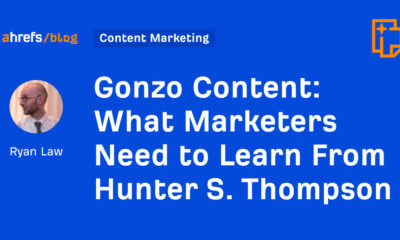

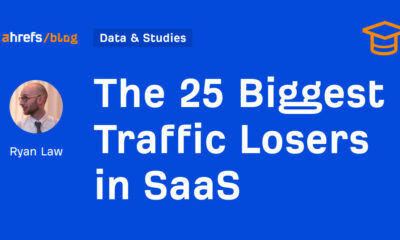

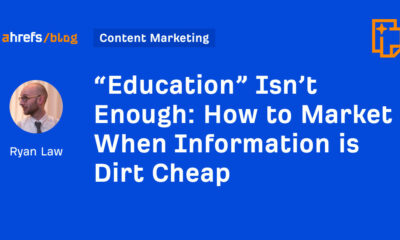

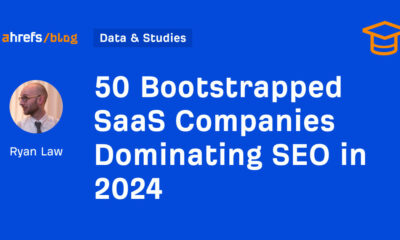

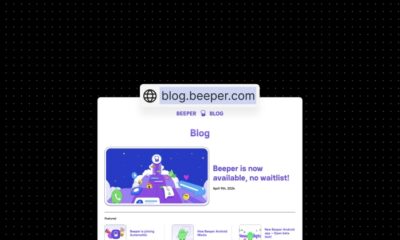

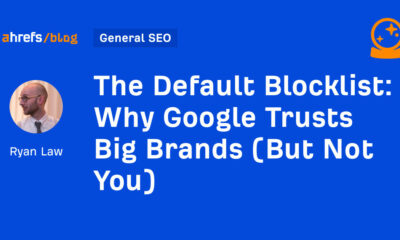


You must be logged in to post a comment Login